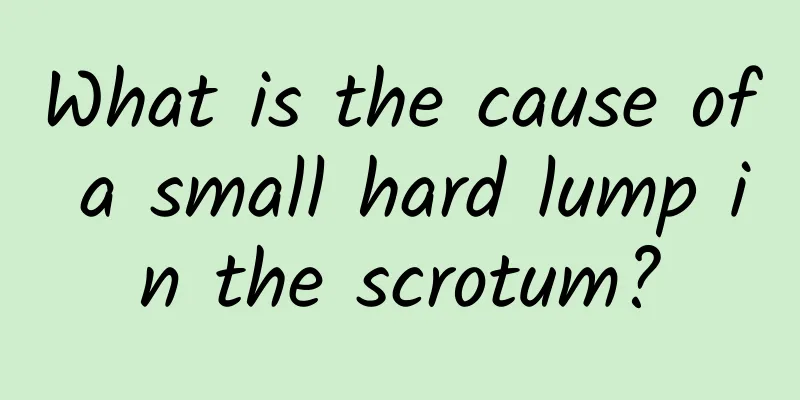9 symptoms of male urethritis and folk remedies for treating male urethritis

|
How to treat male urethritis? Due to work pressure and social activities, the incidence of male diseases is getting higher and higher. Urethritis is a disease that most men hate. Today, the editor will introduce the symptoms of male urethritis and some effective methods to treat male urethritis. Come and have a look! Symptoms of urethritis in men 1. Acute urethritis Patients with acute urethritis may have slight differences in clinical manifestations due to different pathogens. Generally speaking, patients will experience urethral discomfort and itching or pain in the urethra or urethral opening at the early stage of the disease, especially when urinating. Urethral pain and obvious redness and swelling of the urethral opening may soon occur, as well as urinary pain, frequent urination, and urgency. There will also be mucous or purulent secretions, and the secretions will form lumps on the urethral opening or underwear. In severe cases, penile swelling and even difficulty urinating may occur. Patients usually do not have enlarged inguinal lymph nodes. Those with urethral mucosal damage or bladder involvement may experience urethral bleeding or hematuria. 2. Chronic urethritis Patients with chronic urethritis often lack obvious clinical symptoms, but may also experience urethral discomfort, itching or burning sensation, pain during penile erection, mucous secretions at the urethral orifice in the morning, bifurcated or thinned urine stream, frequent urination, painful urination or dripping urine, mild redness and swelling at the urethral orifice or no obvious abnormalities, urethral abscesses or fistulas, and swelling or tenderness in the lower abdomen or bladder area if the disease affects the bladder. 3. Acute gonococcal urethritis Acute gonococcal urethritis usually develops after a latent period of 2 to 8 days after infection. Early symptoms include redness, swelling, itching or mild pain at the urethral opening, and urethral discharge is mostly mucous. --It may turn into yellow purulent after 2 days. Redness and swelling may then develop to the entire glans penis and form urethral eversion, the frequency of urination increases and there is obvious pain when urinating, the bilateral inguinal lymph nodes become red, swollen, painful and may even become purulent, and those with prepuce or phimosis may develop glans penis phimitis. Chronic gonococcal urethritis may be formed by the natural transformation of acute gonococcal urethritis after one week. At this time, the patient's acute symptoms are significantly alleviated, the redness and swelling of the urethral orifice and glans penis subside, the secretion is mucous, and there may be urethral discomfort or pain. 4. Non-gonococcal urethritis The incubation period of patients with non-gonococcal urethritis is generally longer, averaging 2 weeks and sometimes up to 5 weeks. In the early stages of the disease, white or clear mucous secretions can be seen at the urethral opening, which often appear in the morning or when squeezed. Patients may have no urination irritation symptoms or only mild pain, but severe cases may also have obvious redness and swelling of the urethral opening and urethral pain. 5. Tuberculous urethritis Tuberculous urethritis is usually caused by the spread of tuberculous mycobacteria in the lesions of urinary tract tuberculosis, seminal vesicle tuberculosis, prostate tuberculosis and penile tuberculosis to the posterior urethra. Patients may show urethral discharge, frequent urination, dysuria, hematuria or urethral bleeding. If urethral stenosis occurs, the urine stream may become thinner, the urine jet may be shortened, urination may be weak, and urination may be difficult. During examination, a thick and hard cord-like urethra may be felt in the perineum. Urethral stenosis can lead to secondary infection and abscessation of the urethra, and occasionally urethrorectal fistula may form. 6. Bacterial urethritis Bacterial urethritis commonly occurs during or after treatment with antibiotics, in cases of excessive foreskin or phimosis, strong and excessive masturbation, insertion of a catheter, endoscope or other hard objects into the urethra, urethral stones, injection of irritating or corrosive chemicals or reagents into the urethra, etc. The main clinical manifestations of patients are redness, swelling or pain at the urethral opening, itching, discomfort or pain in the urethra, urinary pain, urgency and frequency, and a small amount of mucous secretions at the urethral opening, which may gradually turn into purulent secretions. 7. Viral urethritis Viral urethritis is caused by herpes simplex virus or human papillomavirus infection. Patients may develop papules or water blisters at the urethral opening. Patients may not have obvious urethral symptoms, but may also have mild pain, urination discomfort, etc. 8. Fungal urethritis Fungal urethritis, like bacterial urethritis, is also a urinary tract infection caused by the imbalance of normal urethral flora. The patient's symptoms are similar to those of bacterial urethritis, but may be milder. The main clinical manifestations are redness, swelling or pain at the urethral opening, itching, discomfort or pain in the urethra, urinary pain, and a small amount of viscous secretions. In patients with fungal urethritis, their wives or sexual partners often have recurring symptoms or a history of fungal vaginitis. 9. Trichomonas urethritis The incubation period of patients with trichomonal urethritis after infection is 4 to 28 days, and most patients may have no symptoms. A small number of patients may have urethral discomfort, itching or mild pain, urination pain and penile erection pain. Patients may find mucous secretions at the urethral opening when they wake up in the morning, and occasionally there may be purulent secretions. Severe cases may lead to cystitis, prostatitis, epididymitis or penile head dermatitis. In patients with trichomonal urethritis, their wives or sexual partners may also often have symptoms or a history of trichomonal vaginitis. Treatment of urethritis in men 1. Antibiotic Application There are many kinds of drugs currently used for treatment. Two to three drugs should be selected and used in combination according to the type of pathogen and its sensitivity to the drugs. The curative effect is better. The medication should be continued for 7 to 10 days before it can be stopped after the symptoms disappear completely, the urine test is normal, and the bacterial culture is negative. 2. Adjuvant therapy During the acute period of urethritis, you should drink as much water as possible to increase urine volume, which will have a flushing effect on the urethra. If you have frequent urination, urgency, and pain, you can take some anti-masturbation drugs in moderation and remove various inducements that cause urethritis. Urethritis caused by sexually transmitted diseases should be treated at the same time as your spouse, otherwise it will be difficult to cure.
|
<<: Men's urination posture predicts life expectancy
>>: 14 tips for men to keep fit in autumn to help you regain your youth
Recommend
Men maintain their own detoxification weapons
Men in their thirties and forties are often hospi...
How long does it take for a torn frenulum to heal?
The frenulum is very important to humans because ...
What is the reason for low sperm motility index?
When a man encounters a low sperm motility index,...
What foods can enhance sexual function? These three are the most reliable
For men, there is an inevitable connection betwee...
Is there any relationship between prostatitis and kidney deficiency?
I believe that most men are familiar with the pro...
This is a powerful way to relieve erectile dysfunction
Men pay the most attention to their male ability....
A small red dot grew on the skin of the penis
Men must pay attention to proper health care on a...
What are the signs that depression patients are getting better?
There are generally two types of treatments for d...
What is the reason for nocturnal emission in multiple dreams?
Normal men will have spermatorrhea after reaching...
Is it good for men to drink more royal jelly?
Royal jelly has great benefits for the human body...
Redness and swelling around the glans penis
The swelling of the glans penis surface is consid...
What is the normal range of blood pressure and heart rate? What is the relationship between the two?
There is actually a certain connection between bl...
Circumcision scars
Circumcision will indeed leave scars on the skin,...
The reason why men have heavy eye bags
Eye bags are no longer a woman's trouble beca...
Three things men must do after sex
After a short break from sex, the first thing to ...









